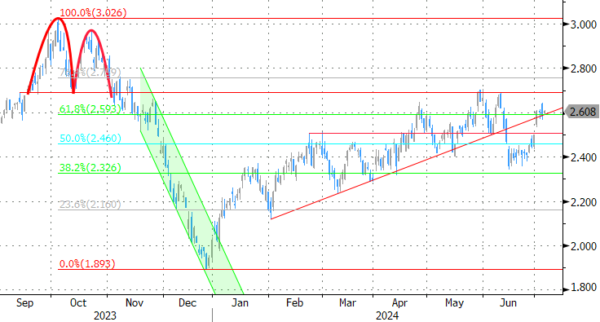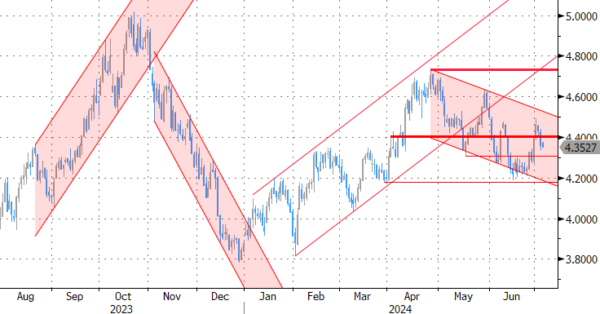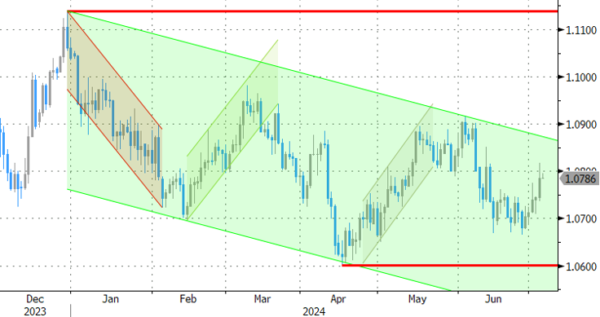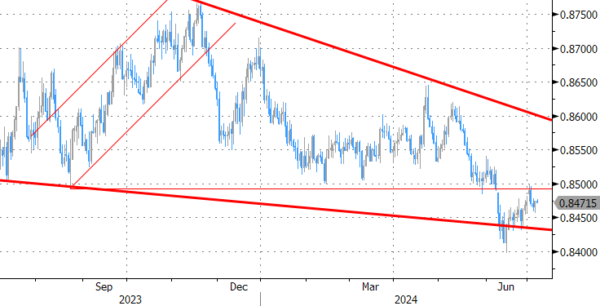Markets
An uneventful session yesterday put the UK elections in the spotlights. It’s already clear by now that Labour won enough seats to secure a majority (at least 326 seats of the 650 up for grabs) after being in the opposition for 14 years. Exit polls taken after voting booths closed at 10 PM yesterday suggested it’s going to be a huge one with estimates going as high as 410, making it a victory comparable to the 1997 landslide under Tony Blair. Outgoing PM Sunak’s Conservative Party simply imploded. Voter turnout was close to a record low. As Labour’s Starmer is ready to move in to Downing Street 10, market attention shifts towards the new government’s policy plans. There’s a feeling that things can only get better in the UK with a hoped-for end to years of political drama that included Conservative infighting, BYOB lockdown scandals, Scotland’s independence referendum and of course Brexit. Labour’s typically has spending ambitions though markets assume the Truss-Kwarteng bond crash brought a sense of fiscal awareness. Chancellor-to-be Rachel Reeves also said that the administration does not plan to raise three key UK taxes on wages and goods. All that have yet to be formalized in a first official budget though, which could take until October. Sterling barely budged on the widely anticipated Labour win. EUR/GBP eked out a small gain yesterday to close at 0.8474. Trading for the next couple of days, perhaps weeks, could remain technically inspired as summer liquidity conditions kick in.
The US returns today after having enjoyed the day off for the 4th of July. They are immediately treated with important data. The June labour market report is due with the bar set at for a 190k job creation. Hourly earnings are expected to roll in at 0.3% m/m (3.9% y/y), easing from the 0.4% the month before. Unemployment would stabilize at 4%. The labour market gained in importance after several Fed governors showed increasing concerns that it may be nearing an inflection point. Upcoming data would now have to prove them otherwise. Markets will react accordingly with anything but a significant beat probably triggering higher bond prices and a weaker US dollar. The US 2-yr yield is trading a few basis points above the June lows of 4.65%. A break lower paves the way for a return to 4.58-4.60%. Longer maturities including the 10-yr have a bit more wiggle room ahead of similar support areas. EUR/USD topped the 1.08 yesterday. Next resistance is located at 1.087 before 1.09 shows up. But this may be a bridge too far for now this weekend’s second round in the French elections looming.
News & Views
Japanese consumer spending in May showed an unexpected steep decline, the statistical bureau said. Spending still rose 1.4% Y/Y in nominal terms but was 1.8% lower in real terms while contracting 0.3% M/M. Consensus expected real spending to have stayed in positive territory (0.3% Y/Y expected from 0.5% in April). The decline originated from food (-3.1%), housing (-3.5%), utilities (-9.7%) but also from lower discretionary spending in furniture and utensils (- 10.0%) and spending on culture and recreation (-8.4%). Positive growth was registered for education (9.3%) and medical care (6.4%). If confirmed by other data, the decline would complicated BOJ policy normalization as it seeks an upward spiral of higher real wages and gradual price rises to support domestic spending. Today’s data are a factor for the BOJ to wait with a rate hike at the upcoming July 31 meeting. USD/JPY (160.75) this morning eases of multi-decade highs just below 162 reached earlier this week, but this at least partially due to USD softness.
The NBP of Poland last Wednesday as expected left its policy rate unchanged at 5.75%. In new projections, inflation expectations were upwardly revised for this year (3.7% from 3.55%) and specially for next year (5.25% from 3.6%). In the press briefing commenting the decision yesterday, the new forecast caused governor Glapinski to conclude that expectations for a rate hike anytime soon are out of question. Inflation might again reach 5.0% at the end of this year and might even accelerated further on higher energy prices at the start of 2025. In this context, he concluded that a possibility to cut rates might only take place in 2026 at earliest. The zloty extended this week’s gains with EUR/PLN closing at EUR/PLN 4.2825).
Graphs
GE 10y yield
The ECB cut its key policy rates by 25 bps at the June policy meeting. A more bumpy inflation path in H2 2024, the EMU economy gradually regaining traction and the Fed’s higher for longer US strategy make follow-up moves difficult. Markets are coming to terms with that. Meanwhile, much of the save haven bids were reversed after the first round in the French elections. The 2.34%-2.4% support zone looks solid.
US 10y yield
The Fed needs more evidence than just one slower-than-expected (May) CPI is providing. Upgraded inflation forecasts and a higher neutral rate complicate the timing of a first cut further. June dots suggest one move in 2024 and four next year. The long end of the curve is supported by increased odds of a Trump presidency after the debate with Biden. The spectre of increased spending (risk premia) pulled the 10-yr away from the 4.2% support area.
EUR/USD
EUR/USD is stuck in the 1.06-1.09 range. The desynchronized rate cut cycle with the ECB exceptionally taking the lead, strong US May payrolls and a swing to the right in European elections pulled the pair away from 1.09. The Fed meeting balanced the weaker than expected US CPI outcome. The increased probability of a hung French parliament after the first round offered the euro some relief.
EUR/GBP
Debate at the BOE is focused at the timing of rate cuts. May headline inflation returned to 2%, but core measures weren’t in line with inflation sustainably returning to target any time soon. Still some BoE members at the June meeting appeared moving closer to a rate cut. This might cap further sterling gains. Labour has yet to reveal its policy plans after securing a landslide election victory. EUR/GBP 0.84 is solid support.


















